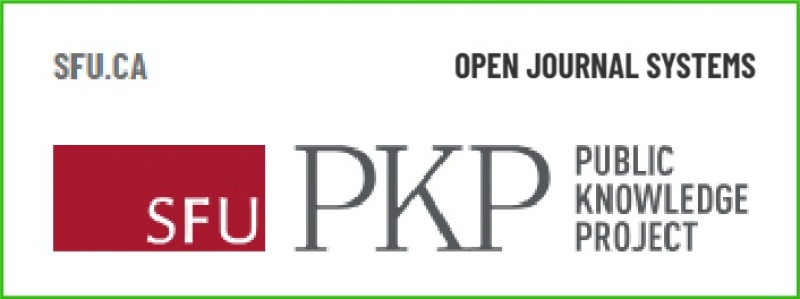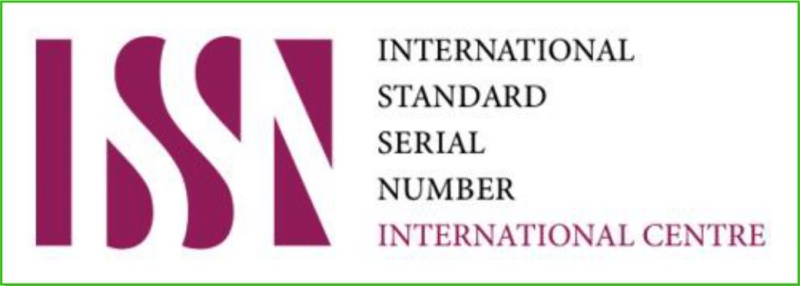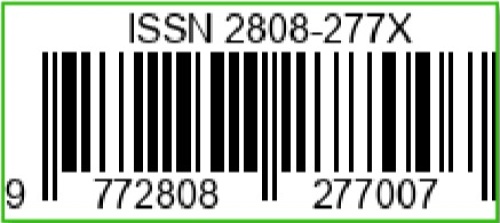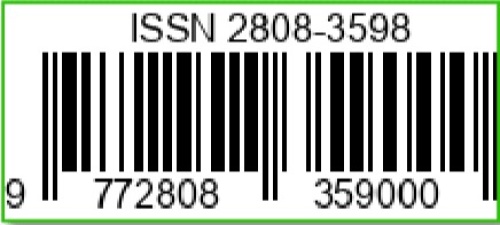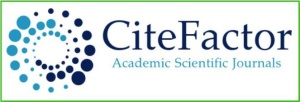Analisis Korelasi Neutrophil-Lymphocyte Ratio (NLR) dengan Indikator Komplikasi Makrovaskular dan Mikrovaskular pada Diabetes Melitus Tipe 2
DOI:
https://doi.org/10.36312/biocaster.v5i3.501Keywords:
Type 2 Diabetes Mellitus, Systemic Inflammation, Neutrophil-Lymphocyte RatioAbstract
Type 2 Diabetes Mellitus (DM type 2) is associated with low-grade systemic inflammation. Neutrophil-Lymphocyte Ratio (NLR) is a pro-inflammatory and oxidative stress biomarker in cardiometabolic diseases such as T2DM. This study aims to analyze the relationship of NLR with leukocyte count, random blood glucose, creatinine, total cholesterol, Serum Glutamic Pyruvic Transaminase (SGPT), and Serum Glutamic Oxaloacetic Transaminase (SGOT). The study design is a retrospective analysis with respondents of 162 uncomplicated T2DM patients treated at Mojowarno Christian General Hospital, Jombang. The results of the study showed that the average number of leukocytes was 12,688 cells/µl, neutrophils 75.3%, lymphocytes 17.2%, NLR 8.5, blood glucose 273.2 mg/dl, SGOT 40.88 U/l, SGPT 54.64 U/l, total cholesterol 196.3 mg/dl (<200), and creatinine 1.13 mg/dl. Correlation tests showed that NLR was significantly associated with leukocyte count (p = 0.000 < 0.05) and total cholesterol (p = 0.000 < 0.05), but not significantly correlated with random blood glucose (p = 0.064 > 0.05), SGOT (p = 0.089 > 0.05), SGPT (p = 0.929 > 0.05), or creatinine (p = 0.625 > 0.05). In conclusion, in patients with type 2 diabetes, NLR was significantly correlated with leukocyte count and total cholesterol, but not with random blood glucose, SGOT, SGPT, or creatinine.
Downloads
References
American Diabetes Association. (2023). Standards of Medical Care in Diabetes (46th Ed.). Arlington: American Diabetes Association.
Buonacera, A., Stancanelli, B., Colaci, M., & Malatino, L. (2022). Neutrophil to Lymphocyte Ratio: An Emerging Marker of the Relationships Between the Immune System and Diseases. International Journal of Molecular Sciences, 23(7), 1-10. https://doi.org/10.3390/ijms23073636
Chen, H. L., Wu, C., Cao, L., Wang, R., Zhang, T. Y., & He, Z. (2024). The Association Between the Neutrophil-to-Lymphocyte Ratio and Type 2 Diabetes Mellitus: A Cross-Sectional Study. BMC Endocrine Disorders, 24(1), 1-11. https://doi.org/10.1186/s12902-024-01637-x
Duman, T. T., Aktas, G., Atak, B. M., Kocak, M. Z., Erkus, E., & Savli, H. (2019). Neutrophil to Lymphocyte Ratio as an Indicative of Diabetic Control Level in Type 2 Diabetes Mellitus. African Health Sciences, 19(1), 1602-1606. https://dx.doi.org/10.4314/ahs.v19i1.35
Hasanah, F. H., Wahyuni, S., & Sari, F. (2022). Korelasi Neutrophil Lymphocyte Ratio (NLR), Serum Glutamic Oxaloacetic Transaminase (SGOT) dan Serum Glutamic Pyruvic Transaminase (SGPT) pada Pasien Covid 19 sebagai Indikator Inflamasi Organ Hati. Jurnal Wiyata : Penelitian Sains dan Kesehatan, 9(1), 54-60. https://doi.org/10.56710/wiyata.v9i1.596
Hasanah, F. H., Wahyuni, S., Sari, F., & Imasari, T. (2024). Korelasi Glukosa Darah Puasa dengan Neutrophil Lymphocyte Ratio (NLR) dan Jumlah Leukosit sebagai Biomaker Komplikasi Kardiovaskuler pada DM Tipe 2. Jurnal Sintesis, 4(2), 153-160. https://doi.org/10.56399/jst.v4i2.153
He, J., Bian, X., Song, C., Zhang, R., Yuan, S., Yin, D., & Dou, K. (2022). High Neutrophil to Lymphocyte Ratio with Type 2 Diabetes Mellitus Predicts Poor Prognosis in Patients Undergoing Percutaneous Coronary Intervention: A Large-Scale Cohort Study. Cardiovascular Diabetology, 156(1), 1-13. https://doi.org/10.1186/s12933-022-01583-9
Jaelani, A. Q., Arif, S. K., Muchtar, F., Nurdin, H., Salam, S. H., & Tanra, A. H. (2023). Hubungan Neutrophil Lymphocyte Ratio dengan Kejadian Acute Kidney Injury pada Pasien Sepsis yang Dirawat di Intensive Care Unit (ICU). Majalah Anestesia & Critical Care, 41(3), 143-154. https://doi.org/10.55497/majanestcricar.v41i3.304
Magliano, D. J., & Boyko, E. J. (2021). IDF Diabetes Atlas (10th Ed.). Brussels: International Diabetes Federation.
Mahajan, M., Prasad, M. K., Ashok, C., Guria, R. T., Marandi, S., Vidyapati, V., Subrat, S., & Chowdhury, A. (2023). The Correlation of the Neutrophil-to-Lymphocyte Ratio with Microvascular Complications in Patients with Diabetes Mellitus. Cureus, 15(9), 1-9. https://doi.org/10.7759/cureus.44601
Nurahmi, N., Mulyono, B., & Windarwati, W. (2021). The Relationship of Neutrophil-Lymphocyte Ratio and Glycemic Control in Type 2 Diabetes Mellitus Patients. Indonesian Journal of Clinical Pathology and Medical Laboratory, 28(1), 66-70. https://doi.org/10.24293/ijcpml.v28i1.1739
Oktaviana, E., Nadrati, B., & Fitriani, A. (2022). Analysis of the Relationship of Blood Glucose Levels with Total Cholesterol and Age of Diabetes Mellitus Patients. International Journal of Nursing and Health Services, 5(2), 197-200. https://doi.org/10.56710/wiyata.v9i1.596
Reza, A., & Rachmawati, B. (2017). Perbedaan Kadar SGOT dan SGPT Antara Subyek dengan dan Tanpa Diabetes Mellitus. Jurnal Kedokteran Diponegoro, 6(2), 158-166. https://doi.org/10.14710/dmj.v6i2.18530
Sanjaya, A. A. K. A., Budiarta, I. B., & Sudarsa, I. W. (2024). Hubungan Antara Kadar Serum Total Kolesterol, Neutrophil-to-Lymphocyte Ratio, dan Diameter Pembuluh Darah terhadap Kejadian Stenosis Arteriovenous Fistula Tipe Radiocephalic di RSUP Prof. Dr. I. G. N. G. Ngoerah Denpasar. Intisari Sains Medis, 15(3), 1312-1319.
Santoso, S., Rachmawati, B., & Retnoningrum, D. (2018). Perbedaan Jumlah Leukosit, Neutrofil dan Limfosit Absolut pada Penderita DM Tipe 2 Terkontrol dan Tidak Terkontrol. Jurnal Kedokteran Diponegoro, 7(2), 854-862. https://doi.org/10.14710/dmj.v7i2.20756
Ulandari, R., Kurniawan, L. B., Nurahmi, N., & Muhadi, D. (2023). Analysis of NLR in Type 2 Diabetes Mellitus with and without Diabetic Foot Ulcer. Indonesian Journal of Clinical Pathology and Medical Laboratory, 29(2), 185-188. https://doi.org/10.24293/ijcpml.v29i2.1971
Downloads
Published
How to Cite
Issue
Section
License
Copyright (c) 2025 Fathul Hidayatul Hasanah, Sri Wahyuni, Danny Meganingdyah Primartati, Aulia Risqi Fatmariza, & Fita Sari

This work is licensed under a Creative Commons Attribution-ShareAlike 4.0 International License.
-
Attribution — You must give appropriate credit, provide a link to the license, and indicate if changes were made. You may do so in any reasonable manner, but not in any way that suggests the licensor endorses you or your use.
-
ShareAlike — If you remix, transform, or build upon the material, you must distribute your contributions under the same license as the original.


